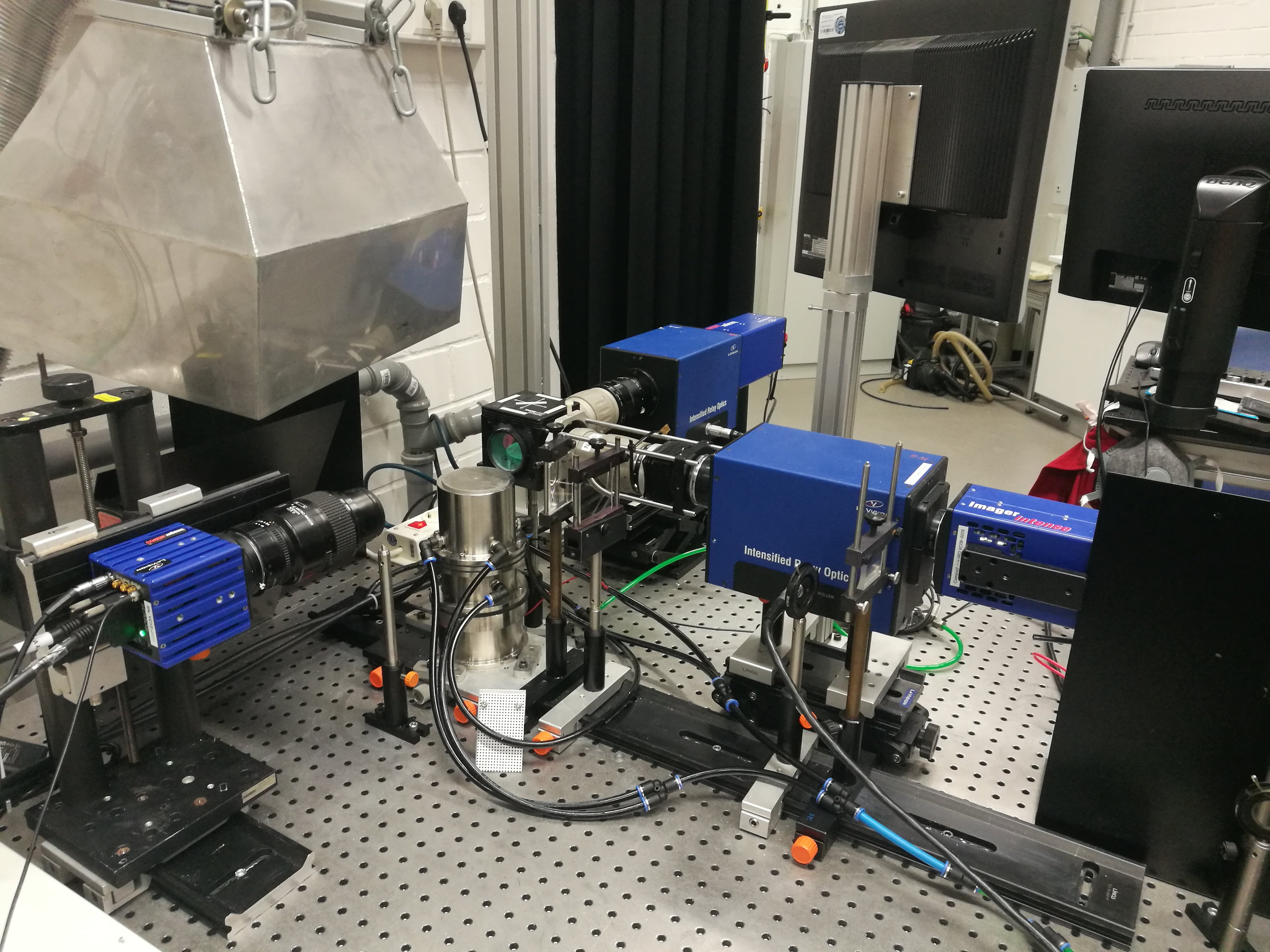Particle dynamics in aerosol heteroaggregation
Heteroaggregates are composite particles formed by two or more phases. A possible process route is mixing of aerosols, either ‘cold’ from prepared powders, or directly from gas-phase synthesis, or both in the same process. However, for nanoparticles the observability of heteroaggregate formation is limited due to their small size, and they exhibit transport properties that are challenging for a simulation.
As part of the DFG Priority Program SPP 2289 we investigate the mixing of aerosol streams and the ensuing nanoparticle heteroaggregation in flow experiments via in situ laser diagnostics. In order to shed light on the physics of the process, we develop spatially resolved in situ diagnostics for quantifying mixing ‘quality’ and for tracking heteroaggregate formation.
The methods need to cover a very wide range of scales: Convective transport, turbulent mixing, and diffusion. The principal flow configuration is an axisymmetric jet in a coflow. Each of these two streams carries a different particle species. The jet is laminar, with a repeatable vortex ring created by periodic perturbations in the jet exit velocity caused by a loudspeaker in the flow path to the jet.
The mixing of both the two gas streams and the two particle streams in the spatiotemporally evolving vortex and the associated particle heteroaggregation is investigated. Experimentally, in quantitative laser-sheet imaging, the mixture fraction is measured via fluorescence of a gaseous ‘tracer’ added to the jet. The particles are from photoactive inorganic materials (‘phosphors’) so that their number densities can be imaged species-selective via photoluminescence.
The particles can also be used for scattering imaging. Using a laser that fires pulses in rapid succession and a camera which can be triggered accordingly, this can also be used to obtain information about the velocity of the particles by particle image velocimetry (PIV).


